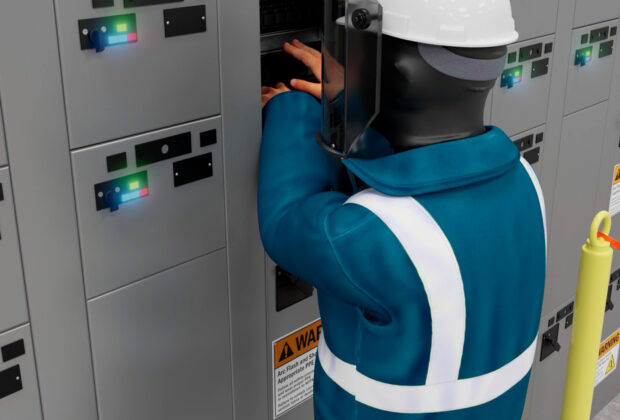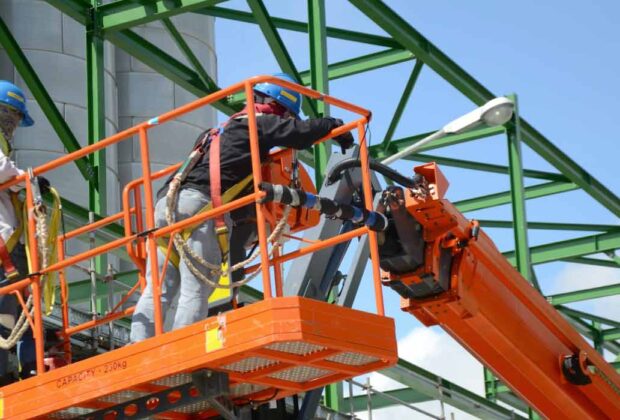By Terry Becker, P.Eng., IEEE Senior Member, CESCP
Trifecta:
“Can be used to describe a situation when three elements come together at the same time. With respect to electrical safety three elements: safe installations, safe work practices and adequate electrical equipment maintenance are The Electrical Safety Trifecta.”
Workplace electrical safety has evolved in the United States and Canada with the application of NFPA 70E Standard for Electrical Safety in the Workplace and since the CSA Z462 Workplace electrical safety Standard published on December 28, 2008. With CSA Z462 now in its published fourth edition, with the fifth edition in the works, energized electrical work in Canada will never be the same. But is this enough? Have we missed a key variable in electrical safety? What about electrical equipment maintenance?
There are really three key elements to electrical safety and ensuring risk related to energized electrical power systems is reduced to as low as reasonably practicable (ALARP): safe installations, safe work practices and adequate electrical equipment maintenance. This “Trifecta” when it comes together will result in achieving the lowest risk to workers and highest reliability for electrical power systems.
The industry has been focused on only legal requirements in the past, safe installations. Yes, OH&S Regulations in Canada and the OSHA Act & Standards in the United States focus on workplace safety, but until recently in Canada, there was no specific focus on shock and arc flash. That has changed.
History, Culture & Behaviors:
When we consider the history of energized electrical work it is hard to believe that we have neglected the electrical hazards of shock and arc flash. Specifically, we have allowed electricians to use their bodies as voltage detectors. Hard to believe, but from 1942 until 1960 the American Electrician’s Handbook taught electricians to use pain as a means of detecting that voltage was present in electrical conductors and circuit parts.

Workers accepted this and accepted completing repair and alteration of energized electrical equipment as “part of the job of an electrician.” Today this, of course, would not be acceptable. In the past we focused on safe electrical installations, this is how we controlled exposure of all workers to shock. But what about arcing faults and arc flash how can we eliminate them from occurring or control the probability?
Worker behaviours have also been a problem and they still are. Change is required, but making the change and ensuring that it occurs and is sustained, is and will be a challenge. How can we put into place “controls” that will have a positive impact on worker behaviours?
Why do we need electrical safety?
History, statistics, and the results of electrical safety audits tell us that employers and employees have a long way to go to achieve sustainable electrical safety and eliminate or reduce the risk of exposure to shock and arc flash. Electrical installations are not constructed or maintained to the CEC or the NEC. We see in the news incidents where equipment and workers make contact with overhead power lines. Electricians continue to be shocked and accept it, they do not wear rubber insulating gloves with leather protectors. Electrical safety audits identify that workers are not “electrical safety competent,” LOTO processes and procedures are not in place or practiced correctly, Engineering “Safety by Design” is not practiced or if it is there may be errors in incident energy analysis studies, electrical hazards are not identified and adequate controls put in place, no electrical safe work procedures are written and used, there is no Electrical Specific PPE, Tools & Equipment or if they have been procured they have not been managed effectively.
Lastly, we have accepted the condition of energized electrical power distribution equipment. We may not have implemented any electrical equipment maintenance practices or the electrical equipment maintenance that has been performed has not been appropriate or completed at acceptable frequencies. Without electrical equipment maintenance, the probability of abnormal conditions occurring on energized electrical equipment increases, thus the “risk” increases.
Evolution & Change:
How can we affect change? How can we ensure the “change” is sustainable? We need to use management systems and apply the tools in Standards/Guidelines within the management systems. We need to deploy the management systems, get them to work for the benefit intended, audit their performance, implement corrective actions and implement a continuous improvement philosophy.
We will need to overcome the challenges that make change difficult:
Change is fear!
Change is overwhelming.
Change is hard.
Change is necessary.
Change is good.
Change is inevitable.
We must commit to change. Without change we cannot improve.
The Canadian Electrical Code, Part 1 and the National Electrical Code, NFPA 70 were developed to effect change in safe installations. The NFPA 70E Standard and the CSA Z462 Standard were developed to effect change in electrical safe work practices.
NFPA 70B and the NETA MTS Standards were developed and have evolved to effect change in electrical equipment maintenance. In Canada the new CSA Z463 Guideline on Maintenance of Electrical Systems published in January of 2014 will effect change in Canada with respect to improvements in electrical equipment maintenance.
A Trifecta for electrical safety is achievable. What do I mean by this statement? I’m not a gambler, and this is not a horse race, but I know that when it comes to electrical safety it is within our power to achieve this level of success. This is the result of managing electrical safety to the highest levels. Doing everything possible to reduce the risk of exposure to workers to the electrical hazards of arc flash and shock.
How can we achieve this result and reduce the risk to as low as reasonably practicable (ALARP), by using the Electrical Safety Trifecta: approved equipment and installed to the CEC Part 1 or NEC, establishing electrical safe work practices (e.g. De-energize, Test-Before-Touch), and implementing effective electrical equipment maintenance. All three of these elements should be implemented and maintained using appropriate management systems.
Approved Equipment Installed to CEC Part 1 or NEC
This is a legal requirement and an expectation with respect to energized electrical equipment. The equipment is designed to perform as intended and installed so that it operates with inherent safety under normal operating conditions. Electrical Quality Management Programs can be developed and implemented to ensure we procure approved equipment and that it is installed to the CEC Part 1 or NEC and that jurisdictional requirements for permitting and inspections occur.
Establishing Electrical Safe Work Practices
With the addition of the CSA Z462 Workplace electrical safety Standard to the tools we have available in Canada we can use it to implement electrical safe work practices. Applying CSA Z462 within an Occupational Health & Safety Management System approach, by developing and implementing an Electrical Safety Program will guarantee measurable and sustainable electrical safety performance.
Effective Electrical Equipment Maintenance
Traditionally electrical power distribution equipment has been maintained to guarantee some level of reliability and to protect electrical equipment from damage by ensuring electrical protective devices operate as intended. A refocusing of electrical equipment maintenance prioritization will focus on ensuring arcing faults do not occur, or limiting incident energy if an arcing fault and arc flash occurs and ensuring that the workers performing energized electrical equipment maintenance are protected. In Canada the new CSA Z463 Guideline for Maintenance of Electrical Systems released in January 2014 will be Canada’s electrical equipment maintenance guideline; it will realign electrical equipment maintenance priorities to: safety to workers, reliability and limiting damage to electrical equipment. By using CSA Z463 in Canada and NFPA 70B and NETA MTS Standards in Canada and the United States in developing Electrical Equipment Maintenance Programs we can ensure that energized electrical equipment is maintained to a “Normal” operating condition and achieve “The Electrical Safety Trifecta.”
Terry Becker, P.Eng, NFPA CESCP Bio:
Terry Becker, P.Eng., NFPA Certified Electrical Safety Compliance Professional (CESCP) is the Owner of ESPS Electrical Safety Program Solutions INC. a total solutions provider for engineering based electrical safety consulting services and products based out of Calgary, Alberta, Canada. Terry has over 22 years experience as an Electrical Engineer working in both engineering consulting and for large industrial oil & gas corporations. Terry is a dedicated, passionate independent Electrical Safety Profession!!
Terry is the first past Vice-Chair of the CSA Z462 Workplace electrical safety Standard Technical Committee, and currently a Voting Member and leader of Working Group 8, Annexes. Terry is also a Voting Member of the IEEE 1584 Committee, Associate Member of the CSA Z463 Guideline for maintenance of electrical systems Technical Committee, and a member of the NFPA 70E Annexes Working Group.
Terry is a Professional Engineer in the Provinces of Alberta, British Columbia, Saskatchewan and Ontario.
Terry has presented at numerous Canadian Standards Association (CSA), IEEE and industry conferences or workshops on electrical safety in Canada, the United States and Australia.
Terry is the visionary and creator of the unique processes and systems established at ESPS to complete Electrical Safety Audits and develop and support Electrical Safety Programs. ESPS also provides classroom based Low & High Voltage Arc Flash & Shock training for Electrical Workers and Non-Electrical Workers. Terry is the Subject Matter Expert, Visionary and Owner of the Electrical Safety Training System (ESTS) a comprehensive adult e-learning based training program for arc flash & shock for Electrical Workers and Non-Electrical Workers.



Comments are closed.